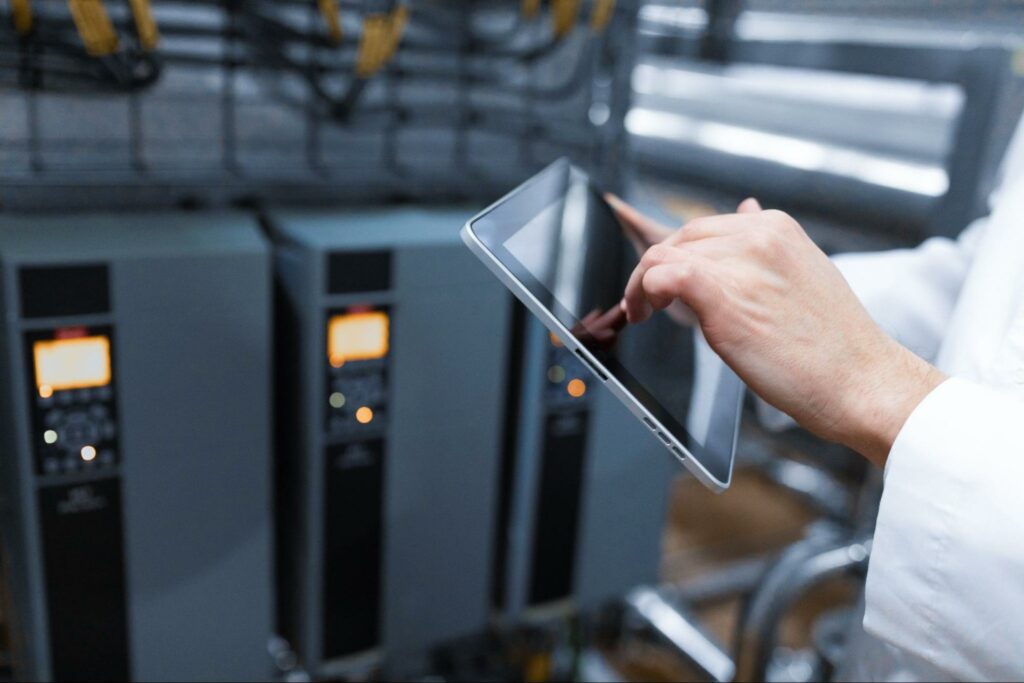An In-depth Look at Hardware-based Cybersecurity

1. Introduction to Hardware-based Cybersecurity

In our digitally-driven age, safeguarding sensitive data and systems is of utmost importance. Hardware-based cybersecurity, unlike mere software solutions, has emerged as a pivotal component in this defense mechanism. But what is meant by “hardware-based cybersecurity”? At its core, it refers to physical devices explicitly crafted to defend computer systems against vulnerabilities and threats. More than just a protective shield, these hardware security tools significantly influence an organization’s overarching cybersecurity approach.
1.1 Software-based and Hardware-based Cybersecurity
The realm of cybersecurity often centers around software solutions. Many are accustomed to terms like antivirus software or firewall applications. Yet, in a time characterized by escalating cyber threats, the indispensability of hardware-based security cannot be stressed enough. It provides the foundational layer upon which robust software solutions can securely function. Below we examine their definitions and how they differ in protecting the network:
Nature and Definition:
- Software-based Cybersecurity: Involves the use of programs and data that can be written, read, and executed. It encompasses antivirus solutions, firewalls, intrusion detection systems, and encryption software.
- Hardware-based Cybersecurity: Pertains to physical devices specifically designed to safeguard computer systems from vulnerabilities. This includes secure boot mechanisms, trusted platform modules (TPMs), and hardware security modules (HSMs).
Protection Focus:
- Software-based Cybersecurity: Typically guards against malware, phishing attacks, and unauthorized software intrusions. They can be regularly updated to protect against the latest threats but might be vulnerable to yet-unknown and zero-day vulnerabilities.
- Hardware-based Cybersecurity: Protects not only against threats like tampering, hardware Trojans, and side-channel attacks. By operating at the physical layer, they ensure security against both known and unknown vulnerabilities, as long as they use the same access type. They also enable secure data transmission and storage.
As the cybernetic horizon expands, bridging the capabilities of both software and hardware cybersecurity solutions becomes crucial. Where software solutions offer dynamic, adaptable defenses against evolving digital threats, hardware ensures a robust, physical layer of security, impervious to certain vulnerabilities that software cannot shield against.
Meticulously balancing and integrating these technologies will not only enhance our defensive matrices but also facilitate a more resilient, multifaceted security posture capable of mitigating a wider array of threats, safeguarding our digital future against both known and uncharted cyber challenges.
![]() See Also: Securing the Future: A Comprehensive Guide to OT Cybersecurity
See Also: Securing the Future: A Comprehensive Guide to OT Cybersecurity
1.2 Importance of Hardware-based Cybersecurity
In the current digital landscape, relying on hardware-based security isn’t merely an option—it’s imperative. It stands as the bulwark defending our digital treasures from the constant menace of cyber onslaughts.
A recent study highlighted that 63% of organizations encountered at least one data breach resulting from hardware security vulnerabilities in the previous year.
This unsettling figure emphasizes the critical part hardware-based cybersecurity holds in preserving our digital assets and upholding the integrity of our systems.
Furthermore, the relevance of hardware-based cybersecurity transcends mere data protection. It is instrumental in guaranteeing the continuous availability and trustworthiness of digital systems. Absence of robust hardware security could render systems vulnerable to disruptions, translating to substantial operational and financial repercussions.
2. Hardware-based Cybersecurity: Advantages

While software-centric methods have their merit, there’s something rock-solid about a hardware-based approach. Some standout benefits include:
- Physical Security: An obvious one, but having a tangible piece of hardware means it can be physically guarded.
- Performance Benefits: Hardware solutions often process tasks faster than their software counterparts.
- Isolation from Software Vulnerabilities: Physical components are, by their very nature, insulated from software bugs and vulnerabilities.
- Long-term Durability: Hardware solutions tend to last longer, reducing the need for frequent updates or changes.
3. Hardware-based Cybersecurity Tools and Solutions

In today’s dynamically shifting digital sphere, the omnipresence of cyber threats dictates an imperatively stout defense strategy. Both software and hardware elements are intertwined in constructing this defensive bulwark, with each bearing its own unique advantages and susceptibilities.
Dissecting Hardware and Software Tools in Cybersecurity:
Hardware-Based Solutions:
Data Diodes: Unlike other cybersecurity tools, data diodes fortify security by their inherent physical nature. Specifically, they facilitate unidirectional data transfer, physically preventing any opposing traffic from breaching the system. This means that not only is data safeguarded, but also potential misconfigurations and human error, that can inadvertently expose systems to threats, are virtually eliminated.
Software-Managed Hardware Solutions:
Intrusion Prevention Systems (IPS), Intrusion Detection Systems (IDS), and Firewalls: While physically manifested as hardware appliances, the actual cybersecurity protection proffered by IPS/IDS and firewalls are predominantly governed by software. This software, determined by rules and configurations, dictates the security protocols, such as monitoring, detecting, and blocking malicious activity.
However, software management means vulnerability to zero-day attacks if not consistently updated. Furthermore, incorrect or incomplete rules and configurations can inadvertently create loopholes, through which hackers can permeate, thus underlining the critical nature of precise and up-to-date software management.
While the above distinctions clarify the varied applications and risks of hardware and software tools in cybersecurity, it’s paramount to acknowledge that utilizing these tools effectively is not solely about implementation. Proactive engagement in regular maintenance, updates, and an integrated application of varied solutions is pivotal in constructing a well-rounded, resilient cybersecurity framework.
![]() See Also: Unidirectional Gateway: Types, Benefits & Applications
See Also: Unidirectional Gateway: Types, Benefits & Applications
![]() See Also: What are Data Diodes? How They Work in Cybersecurity
See Also: What are Data Diodes? How They Work in Cybersecurity
4. Examples and Applications of Cybersecurity Hardware

Now, let’s paint a more vivid picture. Consider critical infrastructures like substations, power grids, and power plants. Their smooth operation is vital for our modern lives. Imagine the chaos if a cyberattack takes down a power grid! A cyberattack on these can lead to massive disruptions, adversely affecting daily life and economy. To understand the importance of hardware cybersecurity in these scenarios, here are some examples:
- Unidirectional Gateways: A crucial addition to modern OT environments, these gateways allow data to flow in one direction only, thus enhancing security. They prevent any inbound communications, ensuring cyber threats can’t penetrate critical power systems.
- Secure Routers: Deployed at communication junctions, these routers ensure that data moving in and out of power systems is legitimate and not originating from malicious sources.
- Encrypted Communication Devices: With power systems often remotely managed, encrypted devices ensure that commands sent or received are not intercepted or tampered with by cyber adversaries.
- Tamper-proof Modules: These ensure that physical hardware isn’t altered with malicious intent. For power systems, it guarantees the integrity of devices managing power flows or grid operations.
- Firewalls: They can be implemented to filter out malicious or unauthorized traffic aiming to exploit vulnerabilities within power grids.
- Intrusion Detection Systems: Particularly important for detecting and responding to anomalies in grid operations, these systems can identify potential cyber threats before they wreak havoc.
- Secure Servers: These servers host critical applications and databases for power systems and protect against unauthorized data access or malicious alterations.
- Unidirectional Gateways:
![]() For a deeper dive, check out solutions for substations.
For a deeper dive, check out solutions for substations.
![]() See Also: Enhancing Resilience: Solutions for Critical Infrastructure in Cybersecurity
See Also: Enhancing Resilience: Solutions for Critical Infrastructure in Cybersecurity
4.1 Hardware Cybersecurity Applications in the Industries
In a world increasingly driven by digital processes, industries from various sectors have turned to cybersecurity hardware to shield their operations. While commercial sectors like finance and retail utilize these tools for data protection, their significance in heavy industries can’t be understated.
Here are some other industry-specific hardware cybersecurity examples:
- Energy and Utilities:
- Unidirectional Gateways: Critical for power plants and substations, they allow data to be sent out from the secure network without any risk of malicious data penetrating back in.
- Firewalls: Preventing unauthorized access, especially in nuclear and hydroelectric plants where a breach could have catastrophic consequences.
- Secure Servers: Safeguarding the energy grid’s operational data and infrastructure specifics.
- Manufacturing:
- Intrusion Detection Systems: Monitoring machinery and production lines to ensure seamless operations.
- Tamper-proof Modules: Shielding the integrity of machinery and ensuring production quality isn’t compromised.
- Industrial Control System (ICS) Protectors: Specifically designed to protect the systems that run heavy machinery and production lines.
- Mining and Metals:
- Unidirectional Gateways: Allowing for the secure transfer of data from excavation sites without risk of external interference.
- Tamper-proof Modules: Protecting equipment in remote locations from physical tampering.
- Intrusion Detection Systems: Guarding against potential threats that could disrupt mining operations or jeopardize worker safety.
- Oil and Gas:
- Firewalls: Protecting sensitive operational data, such as drilling locations and extraction processes.
- Intrusion Detection Systems: Keeping an eye on potential threats in offshore rigs and pipelines.
- Secure Routers: Ensuring legitimate communication between exploration sites and headquarters, especially critical when operating in geopolitically sensitive regions.
- Transportation and Logistics:
- Secure Servers: Protecting logistics data, ensuring seamless transport of goods.
- Intrusion Detection Systems: Monitoring traffic control systems, ensuring the safety of both passengers and cargo.
- Unidirectional Gateways: Used in rail and port systems, ensuring data sent to centralized control centers doesn’t risk an inbound threat.
- Chemicals and Pharmaceuticals:
- Firewalls: Safeguarding proprietary chemical formulas and drug compositions.
- Tamper-proof Modules: Ensuring equipment used in drug production remains uncompromised, maintaining product integrity.
- Intrusion Detection Systems: Scanning for irregularities in production environments where even minor deviations can result in significant consequences.
![]() See Also: What is Industrial Cybersecurity: Control System & Solutions
See Also: What is Industrial Cybersecurity: Control System & Solutions
5. Conclusion
Cybersecurity is no longer just a buzzword—it’s a necessity. While software solutions play their part, hardware-based cybersecurity has emerged as a frontline defense against ever-evolving cyber threats.
Whether it’s protecting our daily digital interactions or ensuring that critical infrastructures run smoothly, the importance of cybersecurity hardware cannot be overstated. Interested in fortifying your hardware security? Contact us for tailored solutions in today’s digital age.

